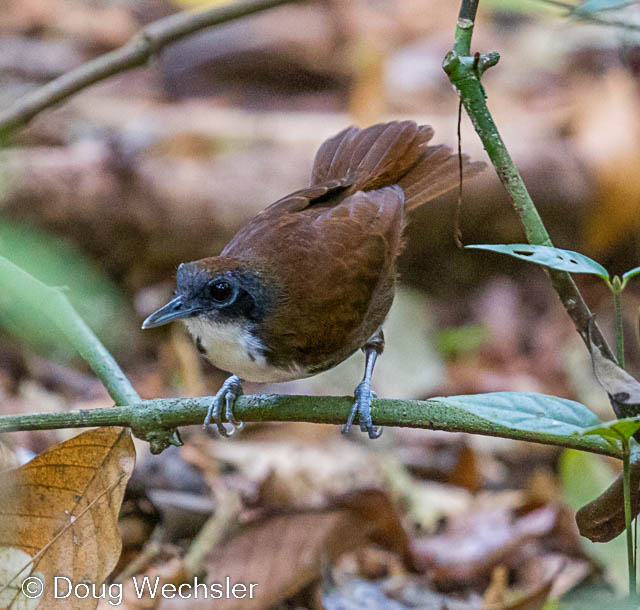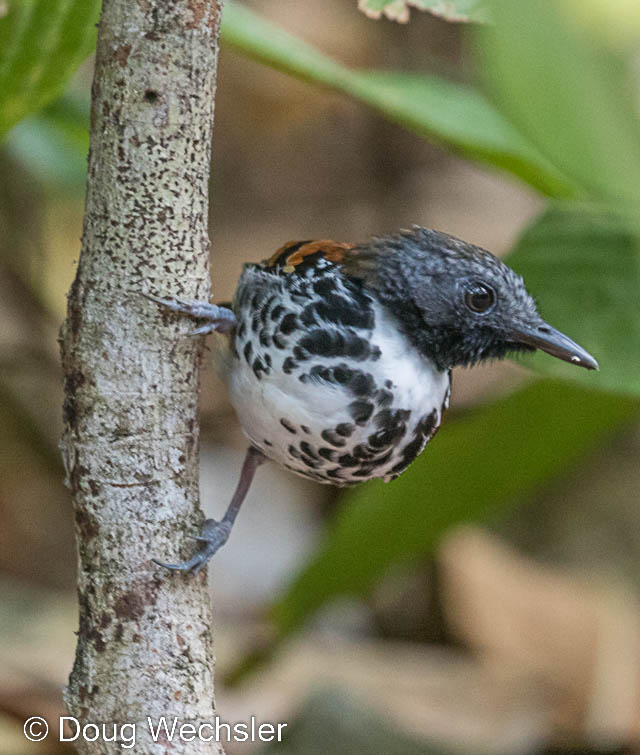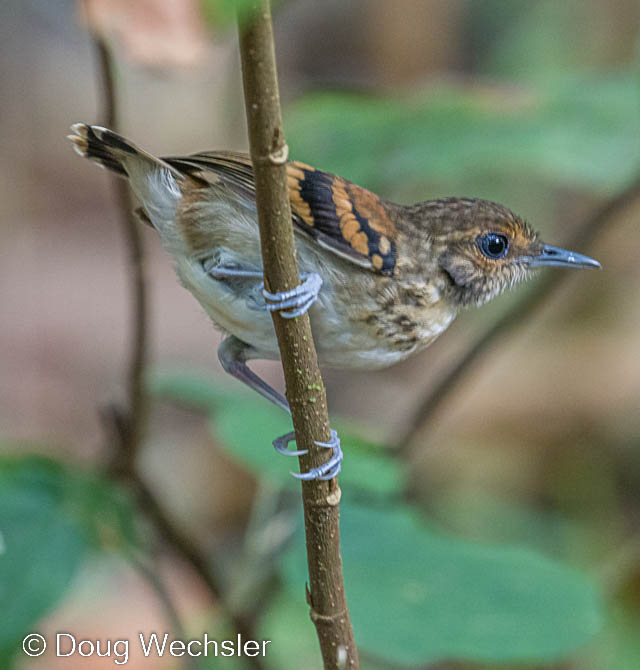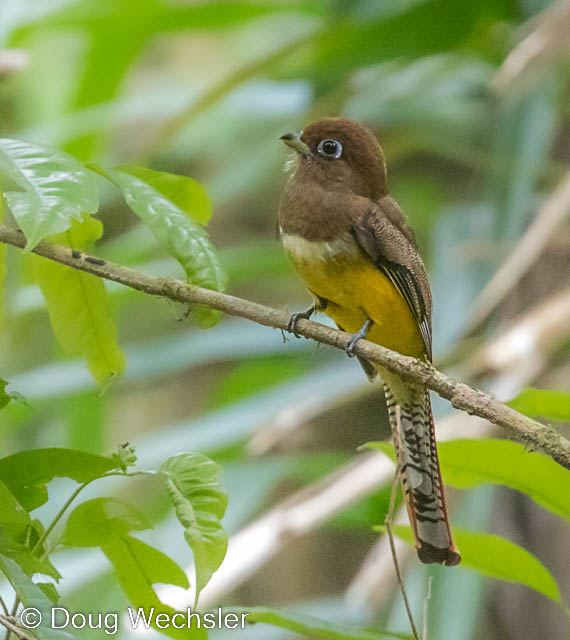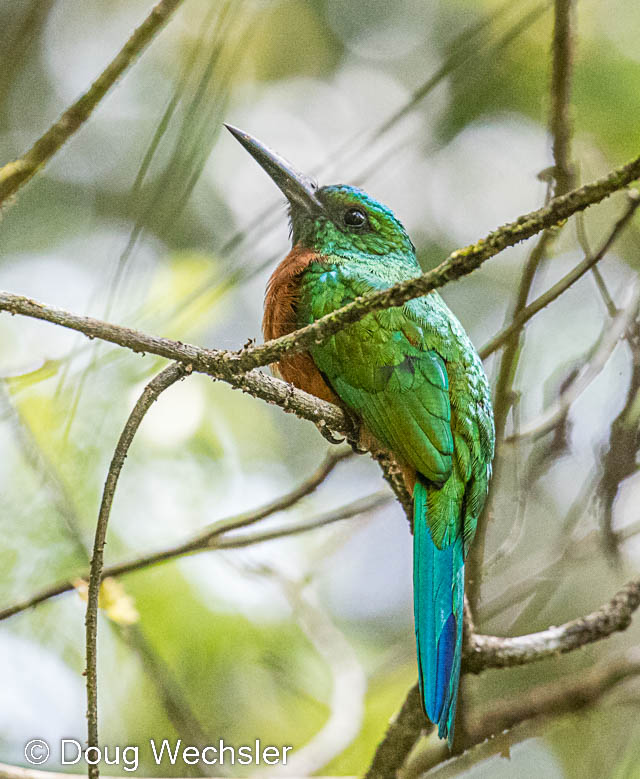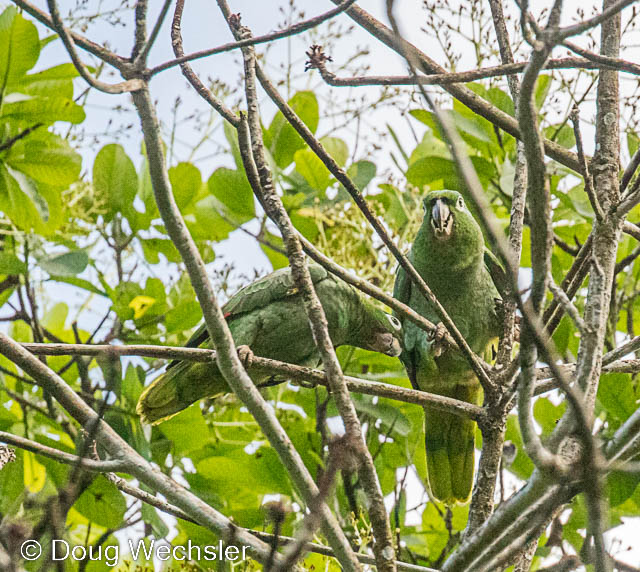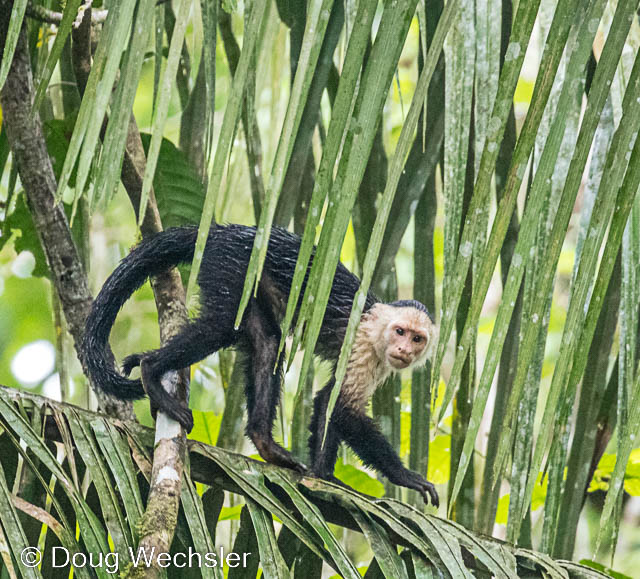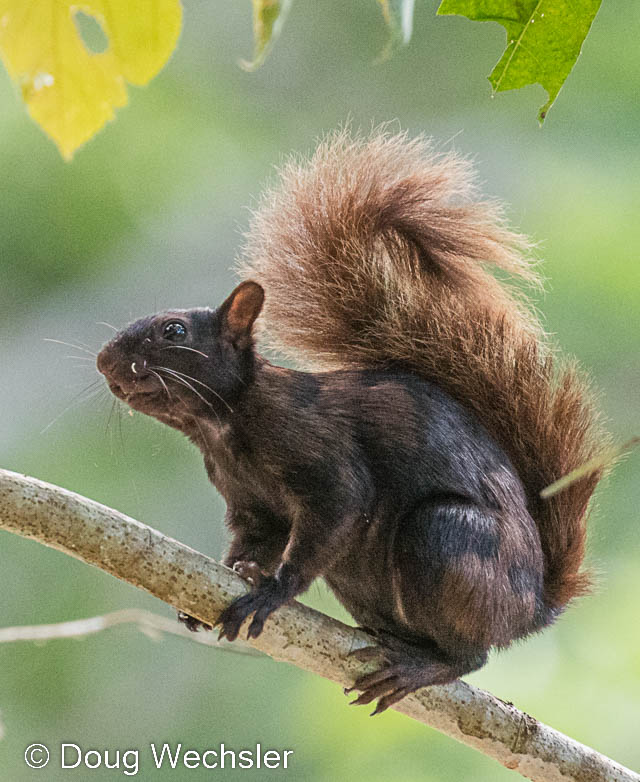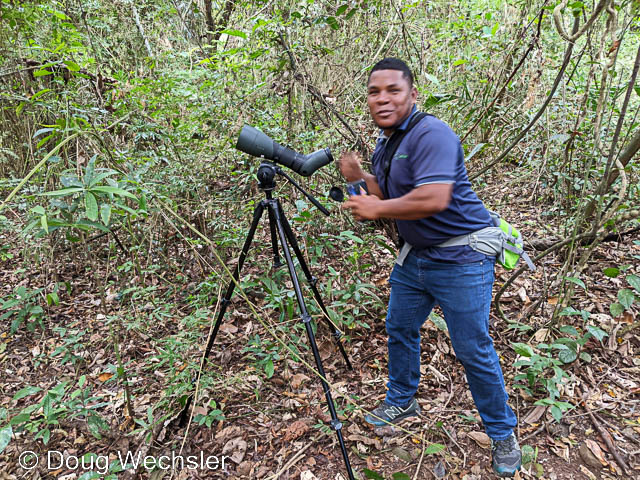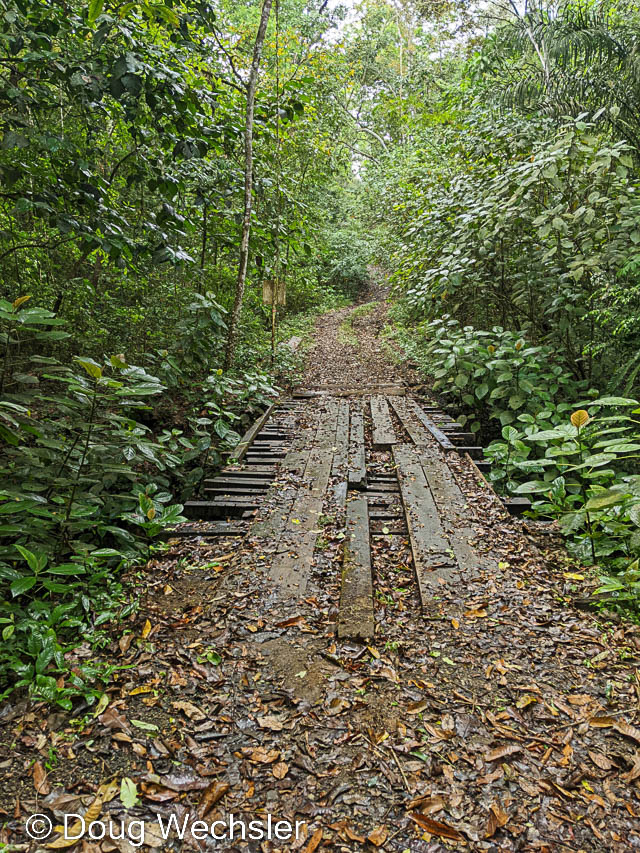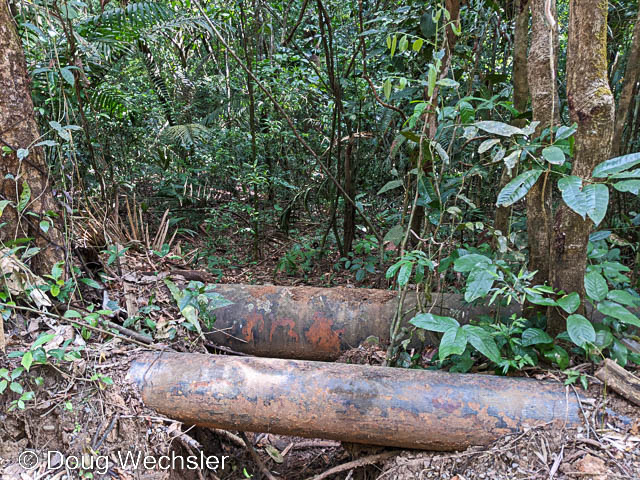The legendary Pipeline Road has some of the best birding in Panama. Debbie and I made three excursions there from Canopy Tower.
Rufous Motmot is common along Pipeline Road. This was one of several birds attending a swarm of army ants, Eciton burchellii. Rufous Motmots often forage at army ant swarms when the ants pass through their territory.
Another participant in the grand feeding fest at the army ant swarm was this Plain-brown Woodcreeper. Though these birds often follow the ants, they can also find food away from them unlike the next bird.
Bicolored Antbirds are “professional” ant-followers. They get virtually all of their food by foraging at swarms of two species of army ants, Eciton burchellii and, less frequently, Labidus praedator. No ants – no bicolors.
A common misconception is that the birds eat the ants. Wrong. The birds eat insects and other small animals escaping from the ants, such as crickets, cockroaches, katydids, lizards, etc. A recent paper suggests that ant-following birds are cleptoparasites (food pirates) working to the detriment of the ants. I am not sure I buy this. The birds have coevolved with the ants, and their presence may put pressure on potential prey to stay hidden until the last minute, which would favor the ants.
Spotted Antbirds, though not 100% dependent on army ants, get much, if not most, of their food at the swarms. Like other ant-following antbirds, they have special leg musculature that helps them perch on vertical stalks just over the swarm.
Further down the road, a female Black-throated Trogon perches patiently waiting for an insect to appear. They also eat fruit.
The brilliant red belly of a Slaty-tailed Trogon often gives the bird away in the dense tropical forest canopy and midstory.
The highly sought-after Great Jacamar can be hard to spot as it spends most of its time motionlessly waiting for a flying insect to pursue in flight.
While standing 32 m (104 ft) above ground in the Panama Rainforest Discovery Center’s tower near Pipeline Road, we watched a pair of Mealy Parrots feed in the tree tops. The grand views from tree-top level towers are always revealing.
A crashing sound in the trees alerts us to a troop of White-faced Capuchin Monkeys. This drenched monkey strolls down a palm leaf looking like it just took a bath. Capuchins eat a wide variety of fruits, insects, and small animals.
It’s lunch time for a Red-tailed Squirrel.
The widespread Variegated Squirrel varies greatly in color from place to place. This is a particularly dark variety.
Slow-moving Three-toed Sloths are abundant, but hard to spot. Often they just look like a ball of debris high in a tree. They eat leaves and have a digestive system somewhat like that of a cow.
Our amazing Canopy Tower guide, Jorge Pineda, could identify all the birds by their calls. Spotting a Ruddy Woodcreeper, he rushes to the scope to get everyone a superb view. All our guides were incredible spotters and extremely knowledgeable about birds.
This is a typical bridge over one of the many creeks crossing Pipeline Road. It’s always a relief when the truck makes it to the far side.
The eponymous pipeline was built across the isthmus during World War II as a precaution to ensure that oil could be transported from the Atlantic to the Pacific. The pipeline was never used, but the adjoining road has given researchers and birders access into the forest. Over 450 species of birds have been recorded along the road.
In the next posting, we will go to Bocas del Toro in western Panama.



